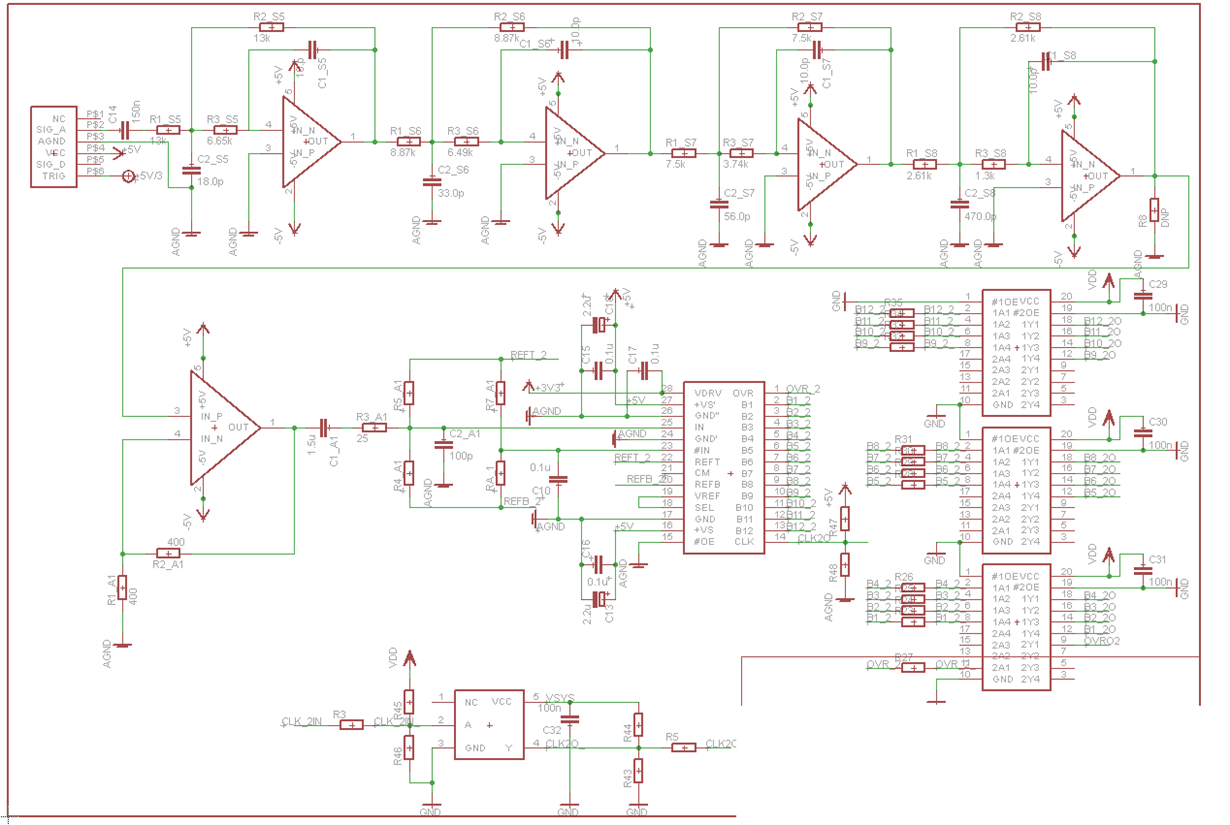HI E2E,
I am using and ADS804 for some DYI project.
I got the sampling working but I see strange noise (around 10mV p to p) on my input into the ADS804 in.
I use the singled ended swinging input generated cm by a voltage divider of REFB and REFT.
I have attached the ads schematic and the input filter schematic to this post.
Do I miss to place 100nF caps on REFB and REFT?
Do I miss to place 100nF caps on +/-5V of the Opamp VCC supply?
My +/-5V supply VCC has an ripple form about 80mV p to p.
The 3.3V ads supply has an ripple around 25 mV p to p.
My ADC clock is 2Mhz derived from the PLL of an FPGA.
Thanks for your help
Regards Florian


